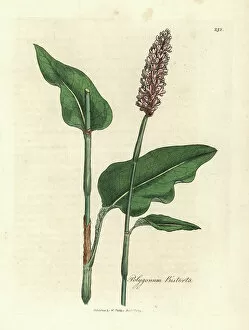Bistorta Collection
"Bistorta: A Versatile and Beautiful Herbaceous Plant" Bistorta, scientifically known as Polygonum bistorta or adderstongue
All Professionally Made to Order for Quick Shipping
"Bistorta: A Versatile and Beautiful Herbaceous Plant" Bistorta, scientifically known as Polygonum bistorta or adderstongue, is a captivating perennial herb that belongs to the family of perianthed plants. With its vibrant flowers and unique foliage, this plant has become a favorite among garden enthusiasts. One popular variety of bistort is the Greater bistort (Polygonum bistorta), which showcases stunning clusters of pinkish-purple flowers. Its elegant appearance makes it an excellent choice for adding color and texture to any garden or landscape. European bistort or snakeroot (Persicaria bistorta) is another enchanting species that captivates with its delicate blooms. This particular type of bistort can be found in various shades ranging from pale pink to deep magenta, making it a true showstopper when in full bloom. Curtis British Entomology Plate 622 beautifully illustrates the intricate details of this remarkable plant. The image showcases how the blossoms attract fascinating insects like scorpion flies (Panorpa communis), creating a harmonious ecosystem within your garden. Commonly referred to as snakeweed, Bistorta officinalis offers not only aesthetic appeal but also medicinal properties. Traditionally used in herbal medicine, this versatile herb has been valued for its potential health benefits throughout history. Whether you choose Persicaria bistorta or Bistorta polygonum (Serpentaria mas seu bistorta), both varieties will undoubtedly bring charm and elegance to any outdoor space. Their lush green leaves provide an attractive backdrop for their eye-catching flowers, creating a visual feast for nature lovers. Whether you are drawn by their beauty or intrigued by their historical significance, incorporating bistorts into your garden will surely elevate its overall appeal. These resilient plants offer not only visual delight but also serve as valuable contributors to our natural environment.













